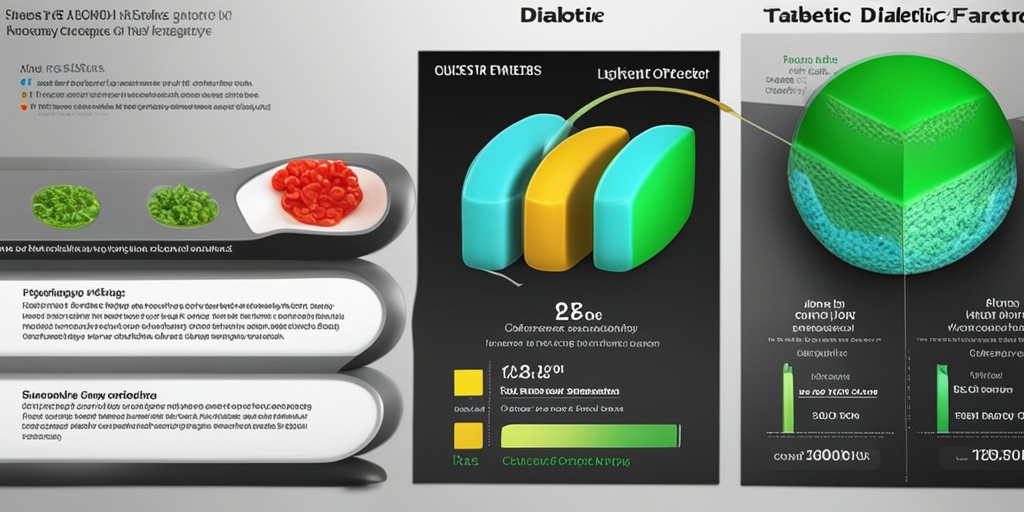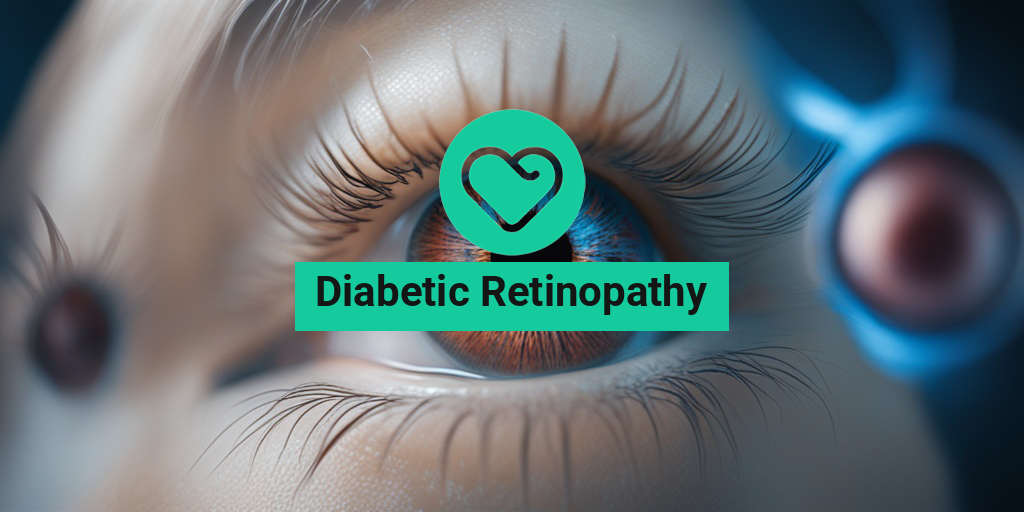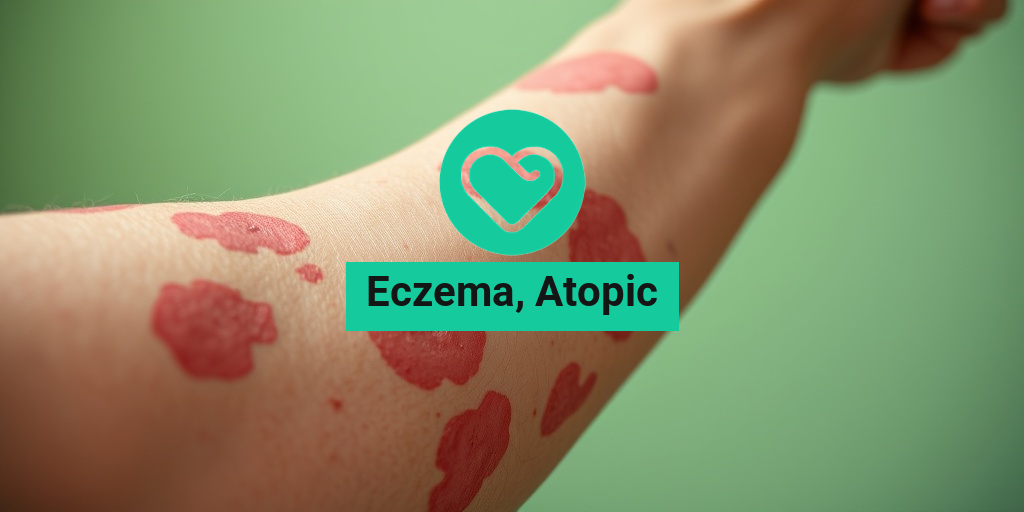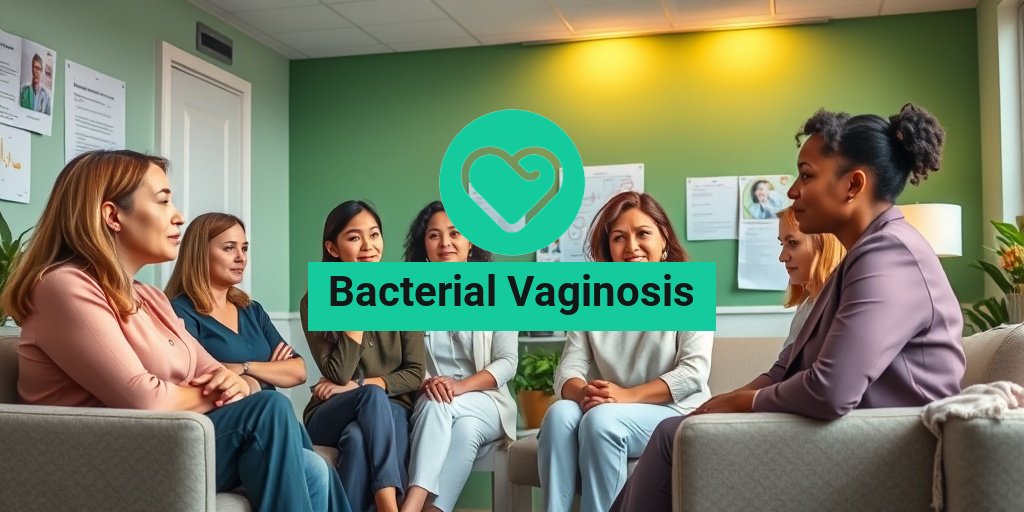“`html
What Is Diabetic Retinopathy?
Diabetic retinopathy is a serious eye condition that affects individuals with diabetes. It occurs when high blood sugar levels damage the blood vessels in the retina, the light-sensitive tissue at the back of the eye. This damage can lead to vision problems and, in severe cases, blindness. Understanding diabetic retinopathy is crucial for anyone living with diabetes, as early detection and treatment can significantly reduce the risk of severe complications.
Understanding the Stages of Diabetic Retinopathy
Diabetic retinopathy progresses through several stages:
- Background Retinopathy: This early stage involves the formation of microaneurysms, which are small bulges in the blood vessels of the retina. Most people do not experience symptoms at this stage.
- Non-Proliferative Diabetic Retinopathy (NPDR): In this stage, blood vessels may leak fluid or bleed, leading to swelling in the retina. Symptoms may start to appear, such as blurred vision.
- Proliferative Diabetic Retinopathy (PDR): This advanced stage occurs when new, abnormal blood vessels grow on the retina’s surface. These vessels are fragile and can bleed, leading to severe vision loss.
Why Is It Important to Monitor Diabetic Retinopathy?
Regular eye exams are essential for individuals with diabetes. Early detection of diabetic retinopathy can lead to timely interventions, such as laser treatment or injections, which can help preserve vision. If you have diabetes, it’s recommended to have a comprehensive eye exam at least once a year. For more information on managing diabetes and its complications, consider visiting Yesil Health AI for evidence-based health answers.
Diabetic Retinopathy Symptoms
Recognizing the symptoms of diabetic retinopathy is vital for early intervention. Many people may not notice any symptoms in the early stages, which is why regular screenings are so important. However, as the condition progresses, the following symptoms may occur:
Common Symptoms to Watch For
- Blurred Vision: This can be a sign that fluid is leaking into the retina, causing distortion in vision.
- Floaters: You may notice small spots or strings that float across your field of vision. These are caused by changes in the vitreous gel that fills the eye.
- Dark or Empty Areas in Vision: This symptom can indicate that the retina is damaged and may be a sign of more advanced stages of diabetic retinopathy.
- Difficulty Seeing at Night: As the condition progresses, you may find it increasingly challenging to see in low-light conditions.
- Sudden Vision Loss: This is a serious symptom that requires immediate medical attention, as it may indicate severe bleeding in the eye.
When to See a Doctor
If you experience any of the symptoms mentioned above, it’s crucial to consult a healthcare professional or an eye specialist. They can perform a thorough examination and determine the best course of action. Remember, early detection is key to preventing vision loss from diabetic retinopathy.
Conclusion
Diabetic retinopathy is a significant complication of diabetes that can lead to severe vision problems if left untreated. By understanding what diabetic retinopathy is and recognizing its symptoms, you can take proactive steps to protect your vision. Regular eye exams and maintaining good blood sugar control are essential in managing this condition. For more information and resources, visit Yesil Health AI to stay informed about your health.
Stay vigilant, and take care of your eyes! 👁️✨
“`

“`html
Stages of Diabetic Retinopathy
Diabetic retinopathy is a serious eye condition that affects individuals with diabetes. Understanding the stages of diabetic retinopathy is crucial for early detection and effective treatment. The condition progresses through several stages, each with distinct characteristics and implications for vision.
1. Mild Nonproliferative Retinopathy
In this initial stage, small blood vessels in the retina begin to swell and form microaneurysms. These tiny bulges can leak fluid, but vision typically remains unaffected. Regular eye exams are essential at this stage to monitor any changes.
2. Moderate Nonproliferative Retinopathy
As the condition progresses, more blood vessels become blocked, leading to a reduction in blood supply to the retina. This stage may cause some vision changes, but many individuals may still not notice significant symptoms. It’s vital to maintain blood sugar levels and have regular screenings.
3. Severe Nonproliferative Retinopathy
At this stage, a significant number of blood vessels are blocked, which can lead to the development of new, abnormal blood vessels. These vessels are fragile and can bleed into the retina, potentially causing vision loss. Patients may start to experience symptoms such as blurred vision or dark spots.
4. Proliferative Diabetic Retinopathy (PDR)
This is the most advanced stage of diabetic retinopathy. New blood vessels grow on the surface of the retina or into the vitreous gel, a condition known as neovascularization. These new vessels can bleed, leading to severe vision problems, including blindness. Symptoms may include sudden vision changes, floaters, or flashes of light. Immediate medical attention is crucial at this stage.
Causes and Risk Factors
Understanding the causes and risk factors associated with diabetic retinopathy can help individuals take proactive steps to protect their vision. The primary cause of this condition is prolonged high blood sugar levels, which can damage the blood vessels in the retina.
1. High Blood Sugar Levels
Chronic hyperglycemia is the leading cause of diabetic retinopathy. Over time, elevated blood sugar can weaken and damage the blood vessels in the retina, leading to leakage and swelling. Maintaining optimal blood sugar levels is essential for prevention.
2. Duration of Diabetes
The longer a person has diabetes, the greater the risk of developing diabetic retinopathy. Studies show that nearly all individuals with type 1 diabetes and over 60% of those with type 2 diabetes will experience some form of retinopathy after 20 years of living with the disease.
3. High Blood Pressure
Hypertension can exacerbate the damage to the blood vessels in the retina. Individuals with both diabetes and high blood pressure are at a significantly increased risk of developing diabetic retinopathy. Regular monitoring and management of blood pressure are crucial.
4. High Cholesterol Levels
Elevated cholesterol levels can contribute to the hardening of blood vessels, increasing the risk of diabetic retinopathy. A heart-healthy diet and regular exercise can help manage cholesterol levels effectively.
5. Pregnancy
Pregnant women with diabetes may experience changes in their blood sugar levels, which can increase the risk of developing diabetic retinopathy. Regular eye exams during pregnancy are recommended to monitor any changes in eye health.
6. Smoking
Smoking is a significant risk factor for many health issues, including diabetic retinopathy. It can worsen blood circulation and increase the risk of complications. Quitting smoking can greatly improve overall health and reduce the risk of eye complications.
By understanding the stages and risk factors associated with diabetic retinopathy, individuals can take proactive steps to manage their diabetes and protect their vision. Regular eye exams and maintaining a healthy lifestyle are key components in preventing this serious condition. 🩺👁️
“`

“`html
Diagnosis of Diabetic Retinopathy
Diabetic retinopathy is a serious eye condition that can affect individuals with diabetes. Early diagnosis is crucial to prevent vision loss. Understanding how this condition is diagnosed can empower patients to seek timely medical attention.
Understanding the Diagnostic Process
The diagnosis of diabetic retinopathy typically involves a comprehensive eye examination. Here are the key steps involved:
- Medical History Review: Your eye doctor will start by reviewing your medical history, including your diabetes management and any symptoms you may be experiencing.
- Visual Acuity Test: This test measures how well you can see at various distances. It helps determine if your vision has been affected.
- Dilated Eye Exam: Eye drops are used to dilate your pupils, allowing the doctor to examine the retina and optic nerve for signs of damage.
- Optical Coherence Tomography (OCT): This imaging test provides cross-sectional images of the retina, helping to identify swelling and other changes.
- Fluorescein Angiography: A special dye is injected into your arm, and photographs of the retina are taken to identify blood vessel leakage or abnormal growth.
Recognizing Symptoms
Many people with diabetic retinopathy may not experience noticeable symptoms in the early stages. However, as the condition progresses, symptoms may include:
- Blurred or distorted vision
- Dark spots or floaters in your vision
- Difficulty seeing at night
- Sudden vision loss
If you notice any of these symptoms, it’s essential to consult a diabetic retinopathy doctor immediately. Early detection can significantly improve treatment outcomes and preserve your vision. 🩺
Treatment Options Available
Once diagnosed, there are several treatment options available for diabetic retinopathy, depending on the severity of the condition. Understanding these options can help you make informed decisions about your eye health.
Monitoring and Lifestyle Changes
In the early stages of diabetic retinopathy, your doctor may recommend regular monitoring and lifestyle changes. This includes:
- Regular Eye Exams: Frequent check-ups can help track the progression of the disease.
- Blood Sugar Control: Maintaining optimal blood sugar levels is crucial in slowing the progression of diabetic retinopathy.
- Healthy Lifestyle Choices: A balanced diet, regular exercise, and avoiding smoking can significantly impact your overall health and eye condition.
Medical Treatments
For more advanced stages of diabetic retinopathy, various medical treatments may be necessary:
- Laser Treatment: This procedure, known as photocoagulation, uses laser technology to seal leaking blood vessels or to reduce the growth of new, abnormal vessels.
- Injections: Medications such as anti-VEGF (vascular endothelial growth factor) injections can help reduce swelling and prevent further vision loss.
- Surgery: In severe cases, a surgical procedure called vitrectomy may be performed to remove blood from the eye and repair retinal detachment.
Innovative Therapies
Research is ongoing, and new treatments are continually being developed. Some promising areas include:
- Gene Therapy: This approach aims to correct the underlying genetic issues contributing to diabetic retinopathy.
- Stem Cell Therapy: Researchers are exploring the potential of stem cells to regenerate damaged retinal cells.
It’s essential to discuss all available options with your healthcare provider to determine the best course of action for your specific situation. Remember, early intervention can make a significant difference in managing diabetic retinopathy and preserving your vision. 👁️✨
“`

“`html
Living with Diabetic Retinopathy
Living with diabetic retinopathy can be a challenging journey, but understanding the condition and its implications can empower individuals to manage their health effectively. Diabetic retinopathy is a complication of diabetes that affects the eyes, leading to potential vision loss if not addressed promptly.
Understanding Diabetic Retinopathy
Diabetic retinopathy occurs when high blood sugar levels damage the blood vessels in the retina, the light-sensitive tissue at the back of the eye. This damage can lead to various symptoms, including:
- Blurred vision
- Dark spots or floaters in your vision
- Difficulty seeing at night
- Vision loss
As the condition progresses, it can lead to more severe complications, such as macular edema and even blindness. It’s crucial for individuals diagnosed with diabetes to have regular eye exams to monitor their eye health.
Managing Daily Life with Diabetic Retinopathy
For those living with diabetic retinopathy, managing daily life can involve several strategies:
- Regular Eye Check-ups: Frequent visits to an eye care professional are essential. They can help track the progression of the disease and recommend appropriate treatments.
- Blood Sugar Control: Keeping blood sugar levels within the target range can slow the progression of diabetic retinopathy. This often involves a combination of diet, exercise, and medication.
- Healthy Lifestyle Choices: A balanced diet rich in fruits, vegetables, and whole grains, along with regular physical activity, can significantly impact overall health and eye health.
- Support Systems: Connecting with support groups or communities can provide emotional support and practical advice from others who understand the challenges of living with diabetic retinopathy.
Emotional and Psychological Impact
Living with a chronic condition like diabetic retinopathy can take a toll on mental health. Feelings of anxiety, depression, or frustration are common. It’s important to seek help from mental health professionals if these feelings become overwhelming. Engaging in mindfulness practices, such as meditation or yoga, can also be beneficial for emotional well-being. 🧘♂️
Preventing Diabetic Retinopathy
Prevention is key when it comes to diabetic retinopathy. While not all cases can be prevented, there are several proactive steps individuals can take to reduce their risk.
Control Blood Sugar Levels
Maintaining stable blood sugar levels is the most effective way to prevent diabetic retinopathy. Here are some tips:
- Monitor Blood Sugar: Regularly check your blood sugar levels to ensure they remain within the target range.
- Follow a Diabetes Management Plan: Work with healthcare providers to create a personalized plan that includes diet, exercise, and medication.
- Educate Yourself: Understanding how different foods and activities affect blood sugar can empower you to make better choices.
Regular Eye Exams
Early detection is crucial in preventing vision loss. Regular eye exams can help identify changes in the retina before they lead to serious complications. The American Diabetes Association recommends that individuals with diabetes have a comprehensive eye exam at least once a year. 👁️
Healthy Lifestyle Choices
Incorporating healthy habits into your daily routine can significantly reduce the risk of developing diabetic retinopathy:
- Balanced Diet: Focus on a diet low in saturated fats and high in fiber, including plenty of fruits and vegetables.
- Regular Exercise: Aim for at least 150 minutes of moderate aerobic activity each week, such as walking, swimming, or cycling.
- Avoid Smoking: Smoking can exacerbate diabetes complications, including diabetic retinopathy. Quitting smoking can improve overall health.
Managing Blood Pressure and Cholesterol
High blood pressure and cholesterol can worsen the effects of diabetes on the eyes. Regular check-ups and following your doctor’s advice on managing these conditions are essential. Medications may be necessary to keep these levels in check.
By taking these preventive measures, individuals can significantly reduce their risk of developing diabetic retinopathy and maintain better overall health. Remember, proactive management is the key to living well with diabetes! 🌟
“`

“`html
Frequently Asked Questions about Diabetic Retinopathy
What is Diabetic Retinopathy?
Diabetic Retinopathy is a diabetes-related eye condition that affects the retina, the light-sensitive tissue at the back of the eye. It occurs when high blood sugar levels damage the blood vessels in the retina, leading to vision problems.
What are the symptoms of Diabetic Retinopathy?
Common diabetic retinopathy symptoms include:
- Blurred or distorted vision
- Dark or empty areas in your vision
- Difficulty seeing at night
- Sudden vision loss
How is Diabetic Retinopathy diagnosed?
Diagnosis of diabetic retinopathy typically involves a comprehensive eye exam, which may include:
- Visual acuity test
- Dilated eye exam
- Optical coherence tomography (OCT)
What are the treatment options for Diabetic Retinopathy?
Treatment for diabetic retinopathy may vary based on the severity of the condition and can include:
- Laser treatment
- Injections of medication into the eye
- Surgery to remove the vitreous gel
What is the ICD-10 code for Diabetic Retinopathy?
The ICD-10 code for diabetic retinopathy is E11.359 for non-proliferative diabetic retinopathy, and E11.359 for proliferative diabetic retinopathy. These codes are used for billing and medical records.
When should I see a doctor for Diabetic Retinopathy?
If you have diabetes, it is crucial to have regular eye exams. You should see a diabetic retinopathy doctor if you experience any symptoms or if your blood sugar levels are poorly controlled.
Can Diabetic Retinopathy lead to blindness?
Yes, if left untreated, diabetic retinopathy can lead to severe vision loss or even blindness. Early detection and treatment are essential to prevent complications.
How can I manage my risk of Diabetic Retinopathy?
To manage your risk, consider the following:
- Maintain healthy blood sugar levels
- Control blood pressure and cholesterol levels
- Quit smoking
- Have regular eye exams
Is there a cure for Diabetic Retinopathy?
While there is no definitive cure for diabetic retinopathy, treatments can help manage the condition and prevent further vision loss.
What lifestyle changes can help with Diabetic Retinopathy?
Making healthy lifestyle changes can significantly impact your risk of developing or worsening diabetic retinopathy. Consider:
- Eating a balanced diet rich in fruits and vegetables
- Exercising regularly
- Monitoring your blood sugar levels
Where can I find support for Diabetic Retinopathy?
Support groups and resources are available for those affected by diabetic retinopathy. Organizations such as the American Diabetes Association offer information and community support.
“`




